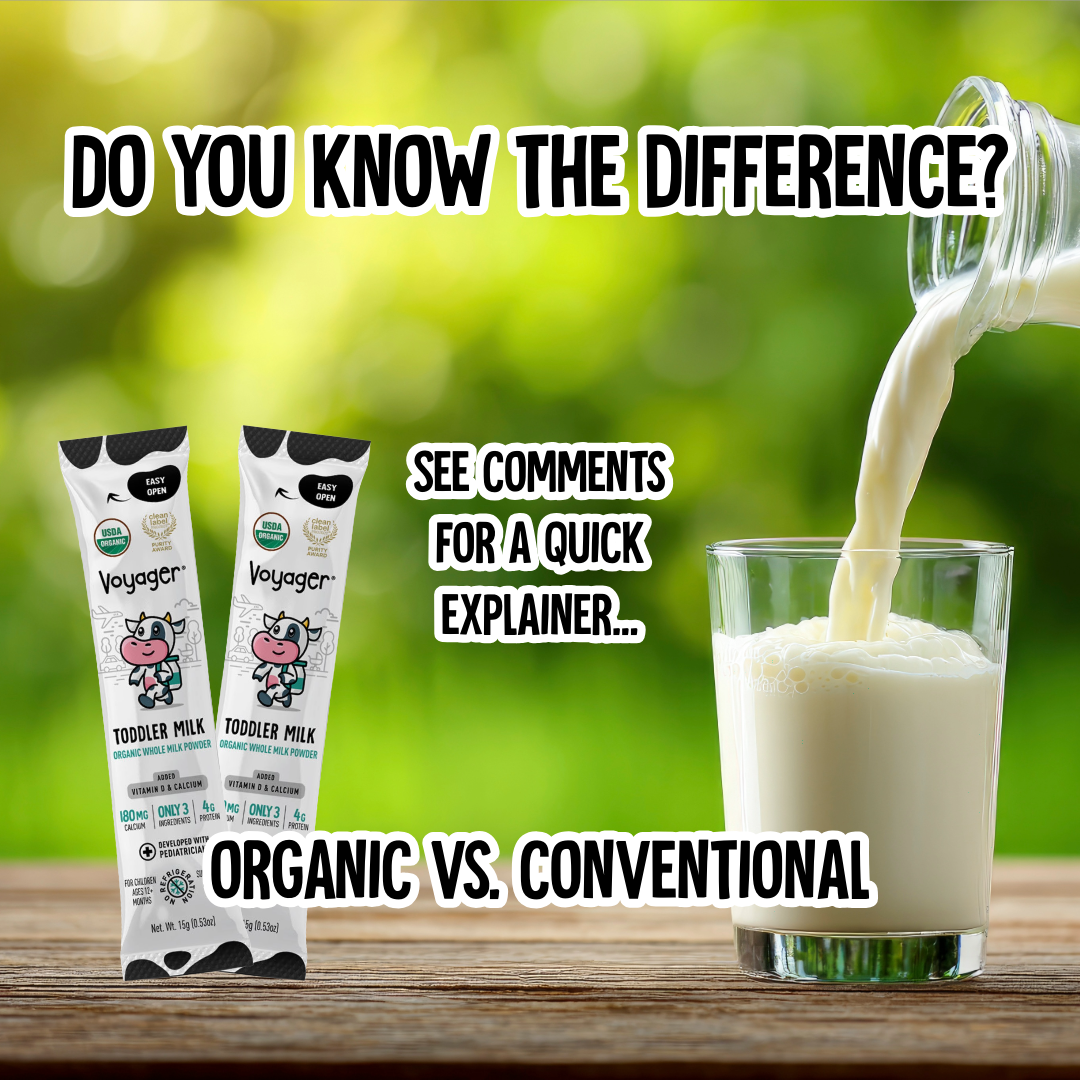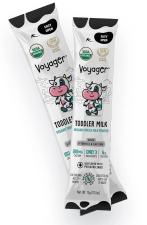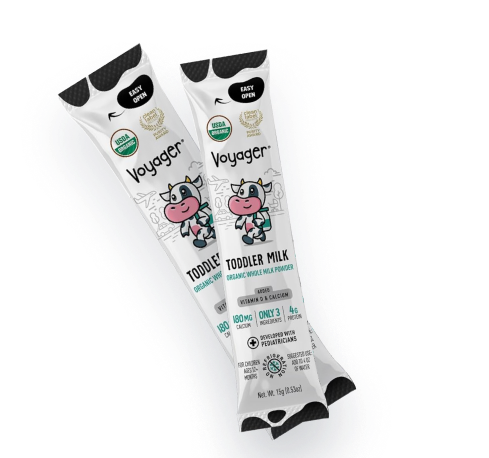
Organic vs. Conventional Milk for Toddlers: What Parents Need to Know in 2025
As a parent, you want the absolute best for your toddler. But when you're standing in the aisle facing dozens of options, the question inevitably arises: Is organic toddler milk really better than conventional? And more importantly, is it worth the extra cost?
The answer isn't always straightforward, but understanding the key differences can help you make an informed decision that's right for your family. Let's break down the science, examine what organic certification actually means, and explore what pediatricians recommend.
What Does "Organic" Actually Mean?
Before comparing organic and conventional toddler milk, it's important to understand what organic certification requires.
USDA Organic Standards
For milk to be labeled USDA Organic, it must meet strict requirements:
Animal Welfare Requirements:
- Cows must have year-round access to pasture
- At least 30% of feed must come from grazing during grazing season (our milk comes from grass-fed cows)
- Animals must be raised without antibiotics or growth hormones
- Livestock living conditions must accommodate natural behaviors
Feed and Farming Requirements:
- No synthetic pesticides or fertilizers on pasture or feed
- No genetically modified organisms in feed
- Organic practices must be documented and verified annually
- Three-year transition period for land before organic certification
Processing Standards:
- No synthetic additives or preservatives
- Minimal processing methods
- Regular third-party inspections and testing
These requirements create a fundamentally different approach to dairy farming compared to conventional methods.
The Key Differences Between Organic and Conventional Toddler Milk
1. Pesticide Residue Levels
One of the most significant differences between organic and conventional milk involves pesticide exposure.
Conventional Milk: Cows producing conventional milk consume feed that may be treated with synthetic pesticides. While pesticide residues in conventional milk typically fall within EPA safety limits, they are detectable in testing.
Organic Milk: Multiple studies have shown that organic milk contains significantly lower levels of pesticide residues. Because organic cows eat organic feed/grass grown without synthetic pesticides, there's minimal opportunity for these chemicals to enter the milk supply.
Why It Matters for Toddlers: Young children are more vulnerable to pesticide exposure because:
- Their developing bodies process chemicals differently than adults
- They consume more food and drink per pound of body weight
- Their neurological development can be affected by certain pesticides
- They have more years of potential exposure ahead
While conventional milk meets safety standards, many parents prefer to minimize any pesticide exposure during critical developmental years.
2. Antibiotic and Hormone Use
Conventional Dairy Farming: Conventional dairy farms may use antibiotics to treat sick cows and sometimes to prevent disease. Some conventional operations also use recombinant bovine growth hormone (rBGH or rBST) to increase milk production.
Organic Dairy Farming: Organic certification prohibits:
- Any use of antibiotics in dairy cows
- All synthetic growth hormones
- Any milk from treated animals entering the organic supply
If an organic cow requires antibiotic treatment for illness, that animal is removed from organic milk production permanently.
The Health Implications: The concern with antibiotic use in livestock isn't that antibiotics appear in milk (they don't in either organic or conventional milk when proper withdrawal times are followed). Rather, it's about antibiotic resistance. Overuse of antibiotics in agriculture may contribute to antibiotic-resistant bacteria, a growing public health concern.
Regarding hormones, while the FDA maintains that rBGH is safe, some research suggests it may increase another hormone called IGF-1 in milk. Many parents prefer to avoid this altogether by choosing organic.
3. Nutritional Profile Differences
Research comparing the nutritional content of organic versus conventional milk has yielded interesting findings.
Omega-3 Fatty Acids: Multiple studies have found that organic milk typically contains higher levels of omega-3 fatty acids, particularly when cows have significant pasture access. Omega-3s are crucial for brain development in young children.
The reason? Grass-fed cows (which organic cows are more likely to be) produce milk with a better omega-3 to omega-6 ratio than grain-fed cows.
Other Nutrients: Research shows organic milk may contain:
- Higher levels of certain antioxidants
- More conjugated linoleic acid (CLA)
- Similar or slightly higher vitamin E content
However, the core nutritional building blocks (protein, calcium, vitamin D) remain comparable between organic and conventional milk.
The Bottom Line on Nutrition: Both organic and conventional whole milk provide excellent nutrition for toddlers. The differences, while real, are relatively modest. The choice often comes down to priorities beyond basic nutrition.
4. Ingredient Simplicity
Conventional Products: Keep an eye on that ingredient label! Many conventional toddler milk formulations contain:
- Added sugars or corn syrup solids
- Maltodextrin
- Palm oil
- Artificial flavors
- Synthetic vitamins in high doses
- Multiple stabilizers and thickeners
Organic Toddler Milk: Organic products, such as Voyager Milk, emphasize clean labels and typically feature:
- Shorter ingredient lists
- Recognizable ingredients
- No synthetic additives
- Organic vitamins from whole food sources
- Minimal processing
For parents following the "less is more" philosophy when it comes to toddler nutrition, organic options often align better with this approach.
5. Environmental Impact
While this isn't directly about your toddler's health, many parents consider environmental factors when making purchasing decisions.
Organic Farming Benefits:
- Reduced synthetic pesticide use protects soil health and water quality
- Better for biodiversity and beneficial insects
- Often involves more sustainable practices
- Typically better animal welfare standards
Considerations:
- Organic farming may use more land per gallon of milk produced
- Both systems have environmental trade-offs
- Local and regional factors matter significantly
What Pediatricians Say About Toddler Milk Choice
The American Academy of Pediatrics (AAP) provides clear guidance on toddler nutrition, though they don't specifically mandate organic versus conventional milk.
AAP Recommendations for Ages 1-3:
Whole Milk is Recommended: After age one, toddlers should drink whole milk (unless directed otherwise by a pediatrician) because:
- Growing brains need fat for development
- Whole milk provides essential calories for active toddlers
- Fat-soluble vitamins (A, D, E, K) are better absorbed with fat present
Daily Amounts:
- 16-24 ounces of milk per day for toddlers
- Not less than 16 oz (insufficient calcium and vitamin D)
- Not more than 24 oz (can reduce appetite for solid foods)
What Pediatricians Prioritize: When asked about organic versus conventional, most pediatricians emphasize:
- That the child drinks milk (organic or conventional)
- Whole milk instead of low-fat for ages 1-2
- No added sugars in toddler beverages
- A varied diet beyond just milk
Many pediatricians note that while organic milk has benefits, the most important factor is ensuring adequate nutrition.
Special Considerations for Toddler Milk Products
Beyond choosing between organic and conventional regular milk, many parents consider specially formulated toddler milk products.
What to Look For in Any Toddler Milk:
Essential Qualities:
- Whole milk fat content (for ages 1-2)
- No added sugars
- Fortified with vitamin D
- Adequate calcium
- Short, recognizable ingredient list
Red Flags:
- First ingredient not listed as “Whole Milk” but “Low-fat” or “Skim”
- Sugar or corn syrup in the first five ingredients
- Excessive synthetic vitamins (mega-dosing)
- Palm oil as a primary fat source
- Long lists of unrecognizable additives
- Marketing claims that seem too good to be true
Reading Labels Like a Pro:
Organic Certification Matters: Look for the USDA Organic seal, not just the word "organic" in marketing. Only products meeting strict standards can display this seal.
Ingredient Order: Ingredients are listed by quantity. If you see sugar high on the list, there's a significant amount in the product.
"Natural" vs. "Organic": "Natural" is largely unregulated marketing language. "Organic" requires certification and compliance with specific standards.
Making the Right Choice for Your Family
There's no universal "right answer" to the organic versus conventional question. The best choice depends on your family's priorities, values, and circumstances.
The Final Verdict: What Really Matters Most
Here's what the research and expert recommendations consistently show:
Universal Priorities (Organic or Conventional):
- Whole milk for toddlers ages 1-2
- 16-24 ounces daily
- No added sugars
- Part of a varied, nutrient-rich diet
- Consistent availability
Organic-Specific Benefits:
- Lower pesticide residues
- No antibiotics or synthetic hormones
- Often higher omega-3s
- Better aligns with environmental values
- Typically cleaner ingredient labels
The Truth: Both organic and conventional milk can absolutely support healthy toddler development. Organic offers additional benefits that some families prioritize, but conventional milk is also an excellent nutritional choice.
The "best" milk for your toddler is one that:
- They'll actually drink
- Fits your family's values and budget!
- Contains wholesome ingredients
- You can provide consistently

